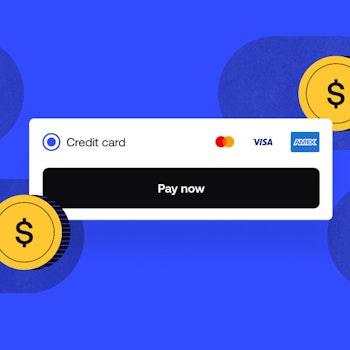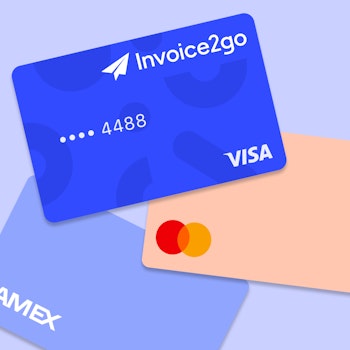The features and surprising benefits of a well-designed packing slip
The packing slip, also known as a delivery note, is often the first thing a customer sees when they open a box delivered from your company. This positioning provides yet another opportunity for your business to put its best foot forward by including your company name and logo, as well as practical details regarding the shipment's contents.
Sure, packing slips might not have the dazzle of an Instagram account or marketing campaign, but when used properly, they can help build brand awareness and enhance the customer experience. Here’s a breakdown of everything you need to know about packing slips, including what sets them apart from other common forms of documentation, and best practices for integrating them into your shipping process.
What is a packing slip?
Each packing slip is a document that lists all the items in a package. A typical packing slip will contain information such as SKU numbers, product quantities, item dimensions, and possibly some part numbers that your warehouse team might use to locate the items when preparing the order.
Packing slips can serve a valuable function for your warehouse staff and ensure that your orders are packed and shipped according to customer specifications. But since your customers are the intended recipients of your packing slips, it's also important to make these documents clear and reflective of your company brand.
Looking for an easy way to create packing slips for your business? You can now easily convert an invoice into a PDF packing slip to keep track of package contents without including prices. This also comes in handy when you want to share job or client details with an employee without revealing pricing information, or comply with customer requests to omit this information.
Packing slip vs. shipping label
What’s the difference between a packing slip and a shipping label? While both are part of the shipping process, the shipping label is designed not for warehouse staff, but for shipping carriers to help them identify and track the package.
That’s why shipping labels go on the outside of the box, and primarily feature the names and addresses of the shipper and receiver. Many modern shipping labels also feature a QR code that can be used for easy tracking.
In contrast, a packing slip will usually be found inside the package itself and focus on the package's contents rather than the shipping address.
Packing slip vs. bill of lading
Sometimes, shipments can be accompanied by a bill of lading (BOL). A bill of lading is a legal document meant to transfer ownership of the goods in the shipment from the seller to the buyer.
The bill of lading and packing slip might contain similar information, such as an itemized list of items, but the shipping courier creates the bill of lading. The courier will rely on this document to ensure confirmation of a shipment's delivery.
Packing slip vs. invoice
Customers receive both a packing slip and an invoice, but these two documents serve different purposes. The invoice is a request for payment and functions very much like a bill, although it contains more information than you'd find on a standard bill or receipt (such as payment terms, customer info, etc.).
The packing slip, on the other hand, arrives with the shipment itself and simply provides an itemized list to confirm the contents of the delivery. A commercial invoice might be sent with the shipment, but it can also be sent after the goods have been delivered.
And because an invoice is a request for payment, customers will have to respond to the invoice within a certain time frame, whereas a packing slip requires no response.
Are packing slips necessary?
Packing slips aren’t a legal requirement for your shipping process–but they can help it run more smoothly. Let's look at just a few reasons why packing slips can be an essential part of your order fulfillment process:
They can help your warehouse employees fill the order
Packing slips can help your employees ensure that they pack the order correctly before shipment, eliminating costly errors.
They can serve as a backup shipping label
It's not uncommon for a shipping label to become damaged in the delivery process. But couriers can use the packing slip as a safety net, ensuring that the order still reaches its destination.
They can be used as an inspection document
Since the packing slip contains a detailed list of the package contents, it can be used to check if there are any hazardous or prohibited items in the shipment. You can also use packing slips during export and import customs clearance for international shipments.
They confirm the contents of the shipment
Customers can use the packing slip to confirm the contents of their orders. Additionally, the packing list can be used to identify damaged items, and the contact info listed on the slip can speed up the refund process.
They can help with your company's bookkeeping
Double-checking that the items on your packing slips match those of the original purchase orders can ensure you've fulfilled your customers' requests. This can make accurate bookkeeping way easier.
Who prepares the packing slip?
The shipper always prepares the packing slip. This setup means that your company will print packing slips and include them in your outgoing orders.
How you accomplish this depends on your company structure. Still, it's not uncommon for the order fulfillment department to prepare and print packing slips, possibly using a company-wide packing slip template to accelerate the process.
Information to include on a packing slip
Your packing slip templates should allow space for the following information:
Order date
The order date and the time when the customer placed the original order are also helpful information. To help you manage your fulfillment process, you can assign a number to each packing slip and the corresponding purchase order. This way, you can match packing slips to PO numbers.
Purchase order (PO) number
Including the PO number on the packing slip can help you link the shipment to the customer's original order, which can help the customer or client confirm that the requested items from that order have been delivered.
Seller's information
Your packing slip will contain information about the shipper, including their:
- Name
- Address
- Contact information
Since your customers will eventually see this document, it can also help to include relevant information about your brand, such as your company logo.
Recipient's information
This information is perhaps the most critical part of every packing slip. You'll need to include information about your customer, including their:
- Name
- Address
- Billing address (if different from shipping destination)
The same information will also go on the shipping label, so it's important to double-check this delivery information before the order is shipped.
Order contents
The main body of your packing slip will include a list of all the ordered items that have been delivered. This section includes information such as:
- Product names
- Product quantities
- SKU numbers
- Unit price
- Weight
Including SKU numbers or UPC codes, both used to identify retail items, is primarily for your benefit and can help with inventory management. But it's also essential to include details that help your customers understand what's inside their order.
If you use multiple packing slips for a multi-package shipment, you'll need to include a separate list of contents for each box. Otherwise, you can use one master packing slip, although it helps to list the contents of each package separately to avoid confusion.
List of out-of-stock items
In some cases, you may be unable to fulfill the customer's entire order. If this happens, you can include a list of out-of-stock or discontinued items, along with any additional details on when or how you might fulfill the rest of the order.
Carrier information
Finally, you'll want to include the name of the delivery carrier. For the carrier's benefit, you'll also add the final weight of the package being shipped.
Delivery instructions
If there are any special instructions regarding a shipment, you can specify them here. For example, many customers might request that the carrier call someone upon arrival. They might also specify a designated location where they receive packages.
Introducing Packing Slip: Create delivery notes without showing the price
What if you want to create a delivery note or packing slip but don't want to show the price on the final form? Invoice2go, a BILL company, offers a brand-new feature that allows you to create and manage packing slips through our intuitive, innovative web app.
How it works
When you use Packing Slip to create an invoice, you have the option to download a PDF of a delivery note using the "Preview" and "Send" tabs.
This setup lets you keep track of the package contents and manage each shipment's details. Deploying this solution helps you identify the customer receiving the shipment and where the package needs to go.
You can simply click the new "Download delivery note" button to download the document as a PDF. Once you have a PDF copy, you can print packing slips for all of your shipments. While you can't email the PDF, this can still be a great option for eCommerce businesses that need to mail their packages to their customers.
How to create a packing slip from a web browser
With Invoice2go a Bill.com company, it's easy to create and manage your packing slips. Simply follow these steps to create and download a packing slip from your web browser:
- Click the Invoices link (found in the side navigation menu)
- To download a packing slip from an existing invoice, click the invoice you want to use. To create a new invoice for the packing slip, click the “Create an invoice” button.
- From the “Edit” tab, verify the client and item information
- Click the “Send” tab
- Click the “Download packing slip” button
- Use your computer to preview, print, or download the packing slip
This setup can make the process easy for you and your team to streamline the order fulfillment process.
Having the ability to generate packing slips with ease can help you to streamline your business, make you more agile and efficient, and provide a meaningful edge over your competition. Ready to step up your business with an easy way to create invoices and packing slips?
Related Articles

How to accept credit card payments on Invoice2go in 3 simple steps

Accept payments online via Apple Pay and Google Pay

Must-not-miss write-offs as you wrap up 2022 year-end finances

5 ways accepting credit and debit card payments helps your business stay resilient

4 easy ways to increase cash flow today

What is Small Business Saturday and why is it important?
The features and surprising benefits of a well-designed packing slip
